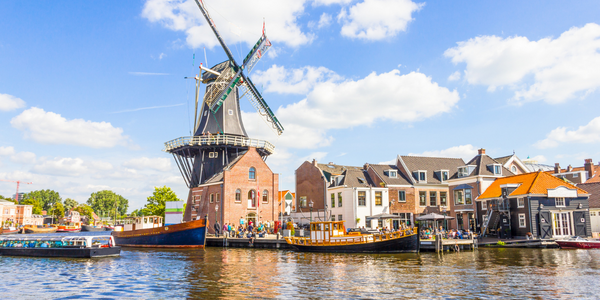Customer Company Size
Large Corporate
Region
- America
Country
- United States
Product
- Avanan
Tech Stack
- Cloud-based email
- Machine learning algorithm
Implementation Scale
- Enterprise-wide Deployment
Technology Category
- Cybersecurity & Privacy - Cloud Security
Applicable Industries
- Cities & Municipalities
Applicable Functions
- Business Operation
Use Cases
- Cybersecurity
Services
- Cloud Planning, Design & Implementation Services
- Cybersecurity Services
About The Customer
Michael Makstman is the Chief Information Security Officer for the City and County of San Francisco. It is a unique position, one that involves the security, privacy and resiliency of 50 separate public agencies that provide critical services to San Franciscans, including public safety, healthcare, transportation, and many others. Makstman came to San Francisco from Kaiser Permanente, where he was Senior Director of Technology Risk Management. Before that, he spent close to a decade at Deloitte Security Services. Though he has spent most of his career in the private sector, what attracted him to the San Francisco CISO role was the sense of mission.
The Challenge
The City Cybersecurity team within the Department of Technology must provide protection for 50 City and County departments subject to widely varying risks and requirements. For example, the Department of Elections must be protected from state-sponsored cyber attacks while also being transparent to public oversight. Health Care and Human Services, Finance and the Courts all fall under multiple regulatory requirements, from HIPAA to PCI to California State and Federal regulations. Needs vary widely. Some organizations have over 10,000 staff members with their own IT staff. Others may only have 50, with elected leaders that change every election cycle. Makstman partners with all to protect their data and services. Whether safeguarding water, power and transportation systems, or supporting health and human services for vulnerable populations, Makstman is tasked with protecting critical municipal services for the one million people who work and live in San Francisco.
The Solution
The City started its move to the cloud before his tenure, with most departments already using cloud-based email when he joined. To protect them, Makstman sought a strong security solution that was cloud-native. City business requirements needed a flexible platform, one that could support multiple cloud email and collaboration tools and one that provided robust analytics. The Department of Public Health (DPH), a City Center of Excellence, deployed Avanan on their own initiative for their email security. DPH's very positive experience gave Makstman and his team the chance to evaluate Avanan in a real-world environment. After a thorough analysis of other leading email security vendors, he recommended the City adopt Avanan as the standard across all departments. Beyond the cloud-capabilities, Makstman wanted to be able to think long-term, to connect with a partner that could work with the City and adapt to a variety of challenges that might be unique to each department.
Operational Impact
Quantitative Benefit

Case Study missing?
Start adding your own!
Register with your work email and create a new case study profile for your business.
Related Case Studies.

Case Study
Turning A Stadium Into A Smart Building
Honeywell created what it called the “intelligent system” for the National Stadium in Beijing, China, turning the venue for the opening and closing events at the 2008 Summer Olympics into a “smart building.” Designed by highly controversial artist Ai Weiwei, the “Bird’s Nest” remains one of the most impressive feats of stadium architecture in the world. The 250,000 square meter structure housed more than 100,000 athletes and spectators at a time. To accommodate such capacity, China turned to Honeywell’s EBI Integrated Building Management System to create an integrated “intelligent system” for improved building security, safety and energy efficiency.
.png)
Case Study
Smart Street Light Network (Copenhagen)
Key stakeholders are taking a comprehensive approach to rethinking smart city innovation. City leaders have collaborated through partnerships involving government, research institutions and solution providers. The Copenhagen Solutions Lab is one of the leading organizations at the forefront of this movement. By bringing together manufacturers with municipal buyers, the Copenhagen Solutions Lab has catalyzed the development and deployment of next-generation smart city innovations. Copenhagen is leveraging this unique approach to accelerate the implementation of smart city solutions. One of the primary focus areas is LED street lighting.

Case Study
Buoy Status Monitoring with LoRa
The Netherlands are well-known for their inland waterways, canals, sluices and of course port activities. The Dutch Ministry of Infrastructure indicates that there are thousands of buoys and fixed items in and near water environments that would profit from IoT monitoring. One of the problems with buoys for example, is that they get hit by ships and the anchor cable breaks. Without connectivity, it takes quite some time to find out that something has happened with that buoy. Not to mention the costs of renting a boat to go to the buoy to fix it. Another important issue, is that there is no real-time monitoring of the buoys at this moment. Only by physically visiting the object on the water, one gains insight in its status.

Case Study
Barcelona Case Study
Barcelona’s heavy traffic and its associated high levels of pollution were the primary factors that motivated some companies and universities to work on strategies for improving traffic in the city centre. Bitcarrier is one of the technologies involved in the In4Mo Project, whose main objective is to develop the applications that form the core of smart mobility, one of the fundamental pillars of the smart city concept.

Case Study
China Mobile Smart Parking
Smart Parking, powered by NB-IoT technology, is making it easier for drivers to find free parking spots. Cities can better manage their parking assets and maximize the revenue available to them as a result. Drivers searching for parking create congestion and pollution by circling and hunting for available parking. Smart Parking services are able to significantly ease these problems by guiding a driver directly to a parking space.








